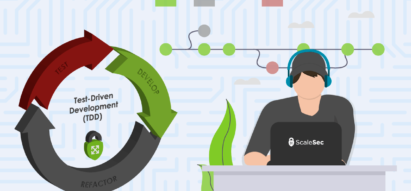In today’s digital age, where performance is paramount in software solutions and handling high traffic is a must, caching has become an indispensable tool in the quest for speed and efficiency. By storing and reusing data, caching significantly reduces the time and resources needed to access frequently-used information. With numerous caching strategies available, selecting the most suitable one for your use case can be a daunting task and time consuming. In this article I delves into five popular caching strategies—write-through, read-through, cache-aside, write-around, and write-back—highlighting their best use cases, considerations, advantages, and disadvantages very briefly.
- Write-through
Best use case: Applications requiring strong consistency and low latency. (Financial and business critical systems)
In the write-through strategy, data is written to both the cache and the underlying storage system simultaneously. This method ensures data consistency, making it ideal for applications where accurate and up-to-date information is crucial.
Advantages:
- Ensures data consistency between cache and storage system.
- Provides low latency for read operations.
Disadvantages:
- Increases latency for write operations.
- Potentially inefficient use of cache space.
- Read-through
Best use case: Read-heavy applications.
Read-through caching retrieves data from the storage system and stores it in the cache upon a cache miss. This strategy is suitable for applications where read operations are predominant and there’s a need to minimize latency.
Advantages:
- Reduces the impact of cache misses on application performance.
- Simplifies cache management by centralizing data retrieval logic.
Disadvantages:
- Initial read operation is slower due to cache miss.
- Potential for stale data if cache isn’t updated on writes.
- Cache-aside
Best use case: Applications with a mix of read and write operations.
Cache-aside (also known as lazy-loading) updates the cache only when requested data is not present. The application is responsible for fetching data from the storage system and updating the cache accordingly. This strategy is well-suited for applications with a balanced mix of read and write operations.
Advantages:
- Efficient cache space utilization.
- Reduces latency for write operations.
Disadvantages:
- Increased complexity in application logic.
- Cache misses cause slower read operations.
- Write-around
Best use case: Infrequently accessed or large datasets.
Write-around caching writes data directly to the storage system while bypassing the cache. This strategy is useful for large or infrequently accessed datasets, as it prevents cache pollution and conserves valuable cache space for frequently-used data.
Advantages:
- Preserves cache space for frequently accessed data.
- Reduces cache overhead for write operations.
Disadvantages:
- Cache misses result in increased read latency.
- No immediate benefit for repeated write operations.
- Write-back
Best use case: Write-heavy applications with acceptable data consistency levels.
In the write-back strategy, data is written to the cache and marked as “dirty.” The cache then asynchronously writes the data to the storage system. This approach is beneficial for write-heavy applications as it reduces the latency associated with write operations.
Advantages:
- Reduces write latency.
- Improves overall throughput.
Disadvantages:
- Risk of data loss in case of cache failure.
- Data consistency may be compromised.
In conclusion, selecting the right caching strategy depends on your application’s specific requirements, such as consistency, read and write frequency, and latency tolerance. By understanding the nuances of each caching approach, you can make informed decisions that enhance your application’s performance and efficiency.


Leave your comment